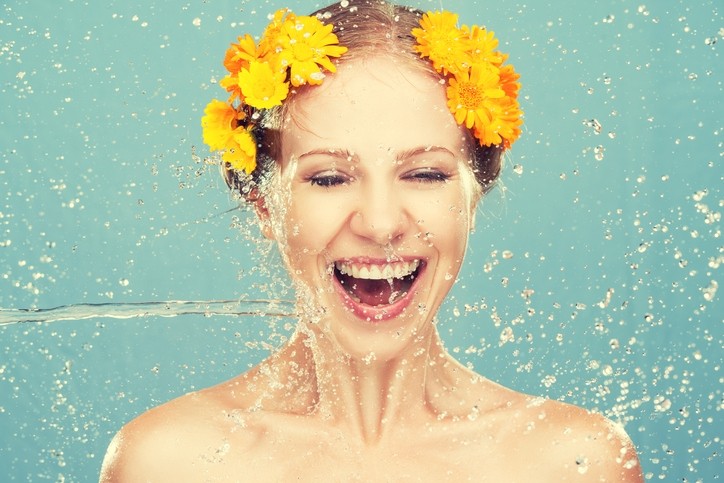Special Edition: Emotions and Wellbeing
Consumer psychologist: Emotions will always grab attention in a world of ‘cognitive misers’

Consumers have very limited cognitive capacity for paying attention and making decisions, but emotional advertising will innately grab their attention and can be powerful short- and long-term, says an expert.
Research has found that the human brain fires off 11 million sensory neurons every second, but only 40 of those go through cognitive pathways – “so, we can’t pay attention to everything,” says Patrick Fagan, consumer psychologist, founder and chief science officer at behaviour science start-up Capuchin and associate lecturer at London’s Goldsmiths University.
Just how then, exactly, can brands engage with consumers within this limited window of concentration?
Sparking consumer curiosity with personal, surprising and emotional elements
“There are certain things that will immediately grab our attention,” Fagan told CosmeticsDesign-Europe.
And some of these worked innately; three in particular, he said: anything personal – your own name being called, even in a crowded cocktail bar, would always be heard; anything surprising – loud noises or sudden movement caused an immediate reaction; or something emotional – faces full of emotion or threatening imagery will always get noticed first.
“With surprising things, first of all we’ll pay attention to it, and then think about it and feel curious and work out why it’s surprising. Likewise, with emotional things, it gets us thinking about the content,” he said.
“…And once you have people’s attention, then there are things to engage people on a less rational level, like stories, puzzles or metaphors which make people think and work out what you’re trying to say. But at the same time fluency is very important.”
But Fagan said that within all of this, there was one critical consideration: “Consumers, all of us, are cognitive misers. We have very limited attention spans and brain power or cognitive capacity for paying attention and making decisions.” People, he said, were also “largely irrational”.
“…Don’t try and overload them with information and do be emotional.”
Asked which emotions worked best, he said that whilst fear was the most powerful human emotion, negative emotions should be avoided by brands. Whilst powerful and highly motivational – particularly effective for something like a stop smoking campaign – negative emotions in advertising simply built up a negative feeling with a brand overall. “You want to grab attention and get consumers to remember the brand, but also associate positive feelings with it.”
Conspicuous consumerism – why emotions run higher in beauty
Emotions were especially important for “conspicuous consumption” categories, Fagan said – those where products were consumed or displayed in public and tied up with a consumer’s identity; something like a can of Coke rather than a bottle of Fairy dishwashing liquid.
And for beauty, emotions were even more important because the category was “even more than conspicuous” – beauty was literally how people presented themselves in the world, he said.
“It’s a very conspicuous consumption category, so there’s a huge tie-in with identity in the self. It’s much more emotional and people feel more passionate about it.”
There was therefore “much more potential and necessity for emotions” to be present in beauty branding, he said.
And these emotions, he said, could be tapped into in several ways: through the product itself, with packaging, via an in-store experience, by a personalised mailshot – a whole range of ways. Stimulating different human senses also proved powerful, he said, with sight, smell, sound and touch all able to trigger physiological arousal and get consumers interested.
Fagan said touch, for example, was linked to the endowment effect, where people started to feel ownership over something once they touched it, and interestingly this also worked through touchscreen technology. A study of consumers browsing clothes online found those using a touchscreen to swipe through had higher feelings of ownership than those using a mouse, he said.
But, Fagan said with any emotional advertising and marketing, it was vital brands were thinking from the perspective of the consumer – targeting what was in it for them; consumers’ selfish motivations.
“Particularly emotional motivations. Money, unless it’s a lot, usually doesn’t tend to motivate much. It’s more about identify, the expectation of feeling good, wanting to boost your social status, relate to people, or feel like you are part of a club. Think about the emotional motivation that would drive people to use the product.”
Can all this theory work for mass beauty, though?
Fagan said a lot of these cognitive processes and emotions were “universal”.
“Most people are motivated to be part of something; feel as though they belong; feel they have some kind of status and self-esteem,” he said. So, for mass beauty brands, he said it was simply about making your brand mentally and physically available for consumers.
Of course, there was data science and social media feedback that enabled a much more targeted advertising approach, and research indicated certain groups reacted to different types of messaging, he said. But there were legal and ethical restrictions to overcome here, particularly when targeting consumer states – mood and needs at a certain time or what consumers were currently thinking about, he said.
The future would see such insights gain importance, he said, especially combined with behavioural sciences, but emotions would continue to play a central role.
“Whatever your goal is, you want to grab people’s attention and motivate some kind of action and get them engaged in what you’re saying. In the short-term, you want to use emotion to immediately drive behaviour; in the long-term, you want to use emotion to get people to remember the brand and get them to feel a certain way.”


![The psychology of fragrance is a fascinating field, throwing up important questions around how gender and cultural background might influence consumer perceptions [Getty Images]](/var/wrbm_gb_food_pharma/storage/images/_aliases/wrbm_medium/publications/cosmetics/cosmeticsdesign-europe.com/article/2022/10/20/fragrance-psychology-shows-same-male-female-responses-with-nuanced-perceptions-based-on-culture-cognitive-associations/15868538-1-eng-GB/Fragrance-psychology-shows-same-male-female-responses-with-nuanced-perceptions-based-on-culture-cognitive-associations.jpg)
![The democratisation of injectables in beauty has seen huge focus on the role of practitioners, but little focus on the lasting impact these procedures have on body image and ideals in society [Getty Images]](/var/wrbm_gb_food_pharma/storage/images/_aliases/wrbm_medium/publications/cosmetics/cosmeticsdesign-europe.com/headlines/formulation-science/botox-and-fillers-market-must-consider-sociological-impact-long-term-on-identifies-and-body-image-say-researchers/15829113-1-eng-GB/Botox-and-fillers-market-must-consider-sociological-impact-long-term-on-identifies-and-body-image-say-researchers.jpg)



















